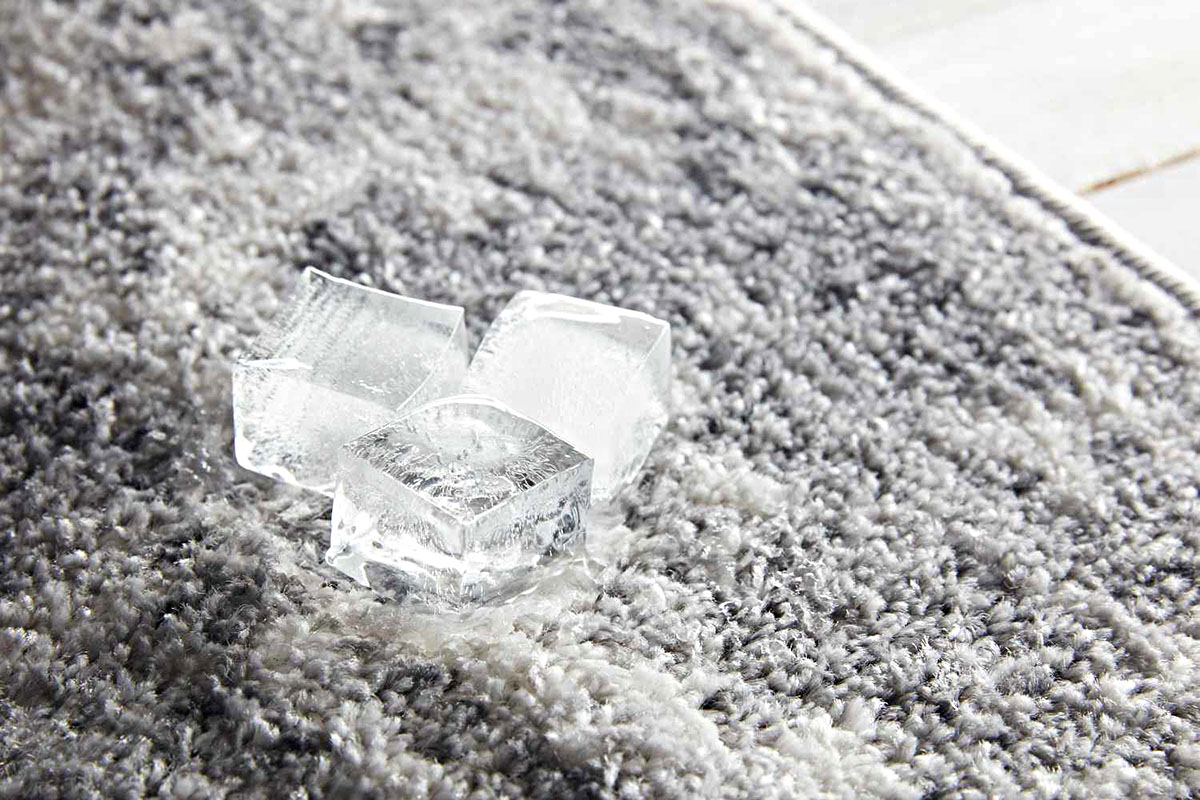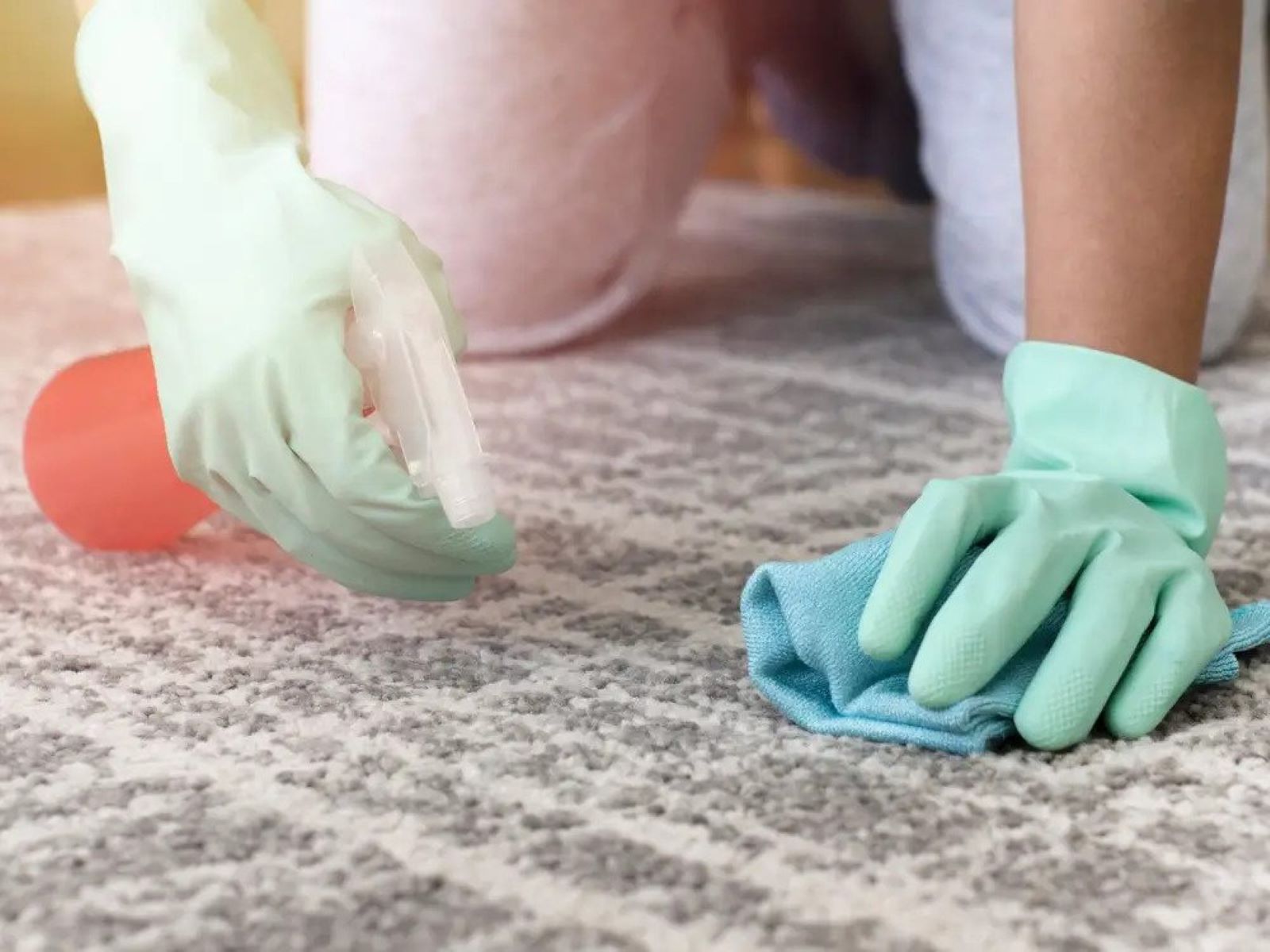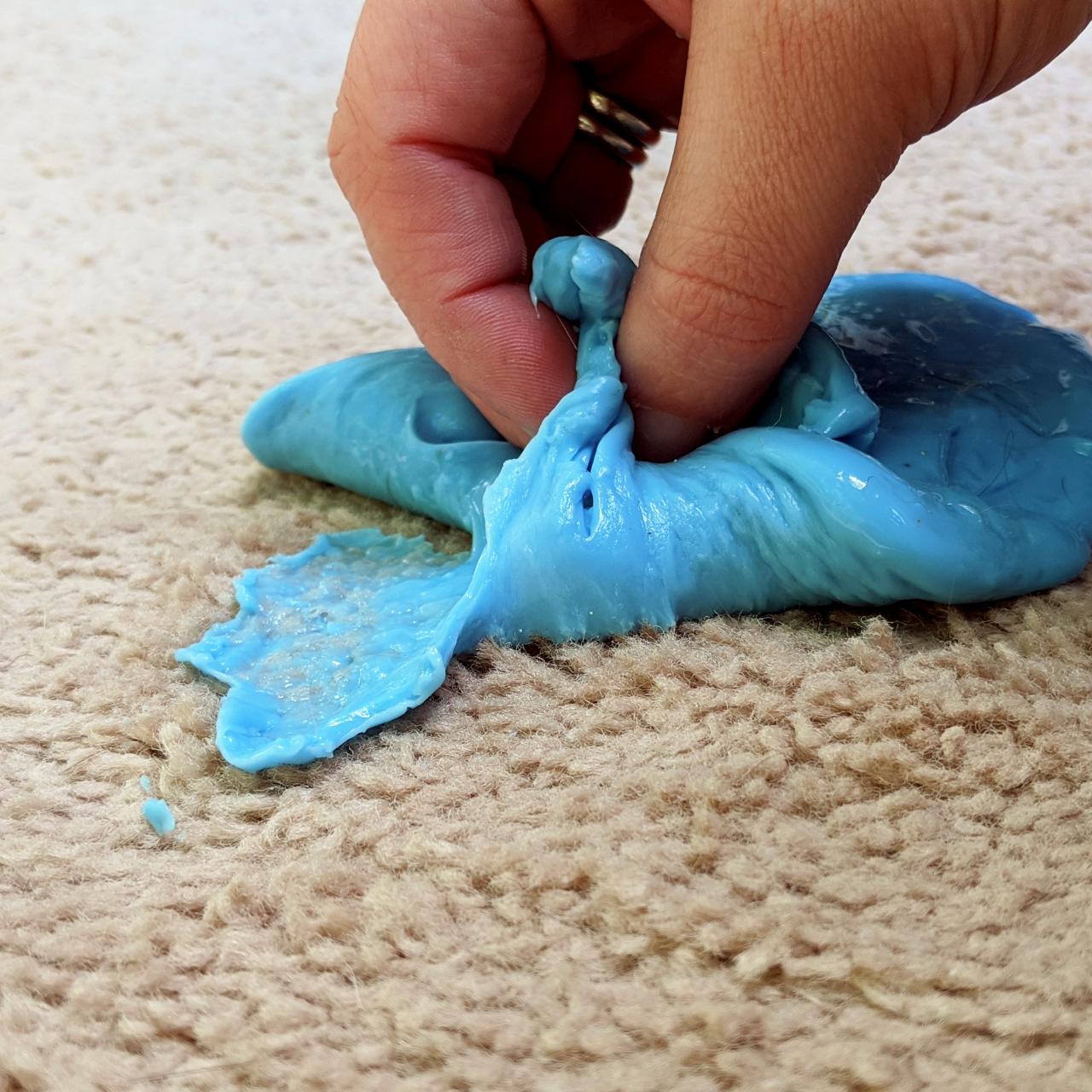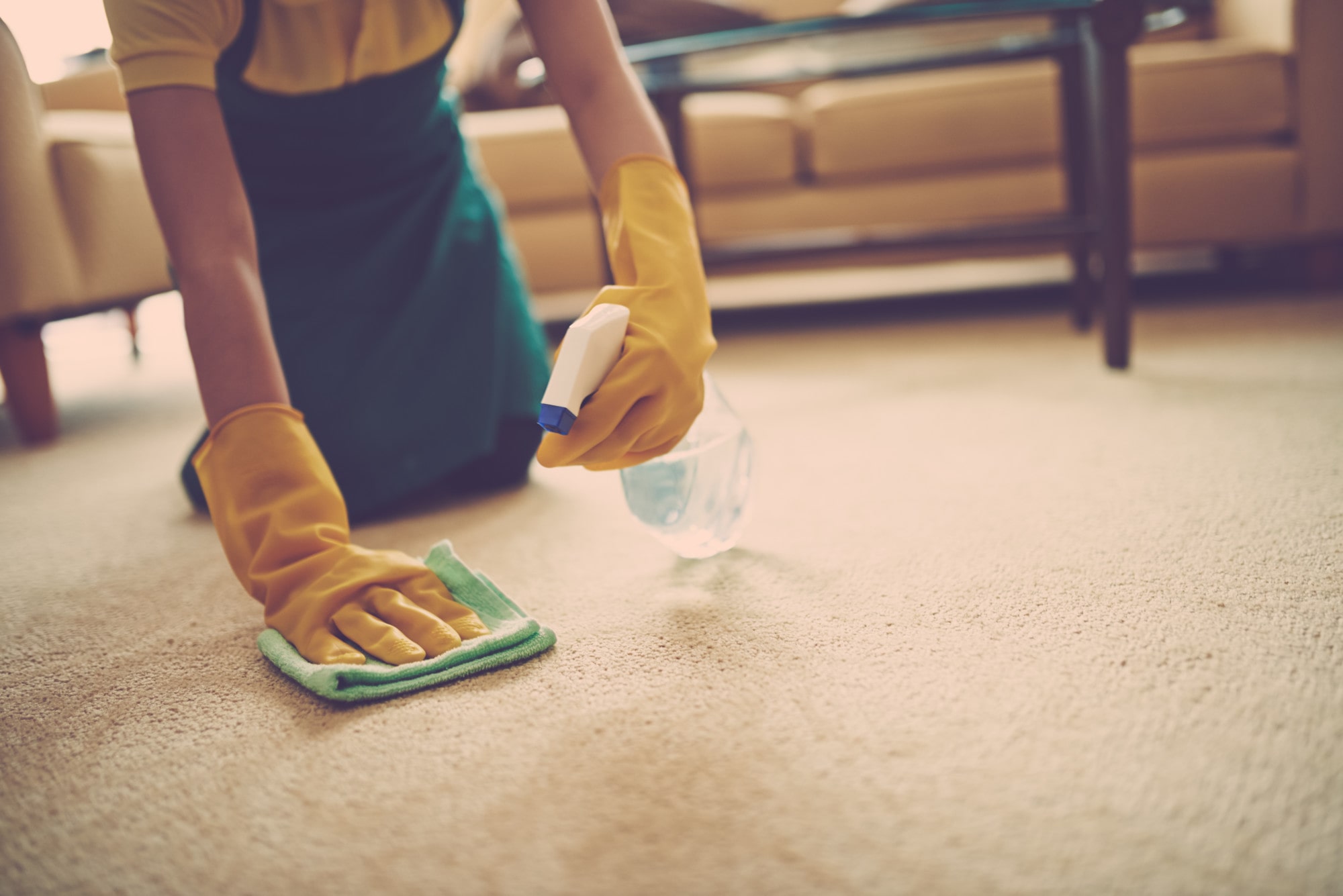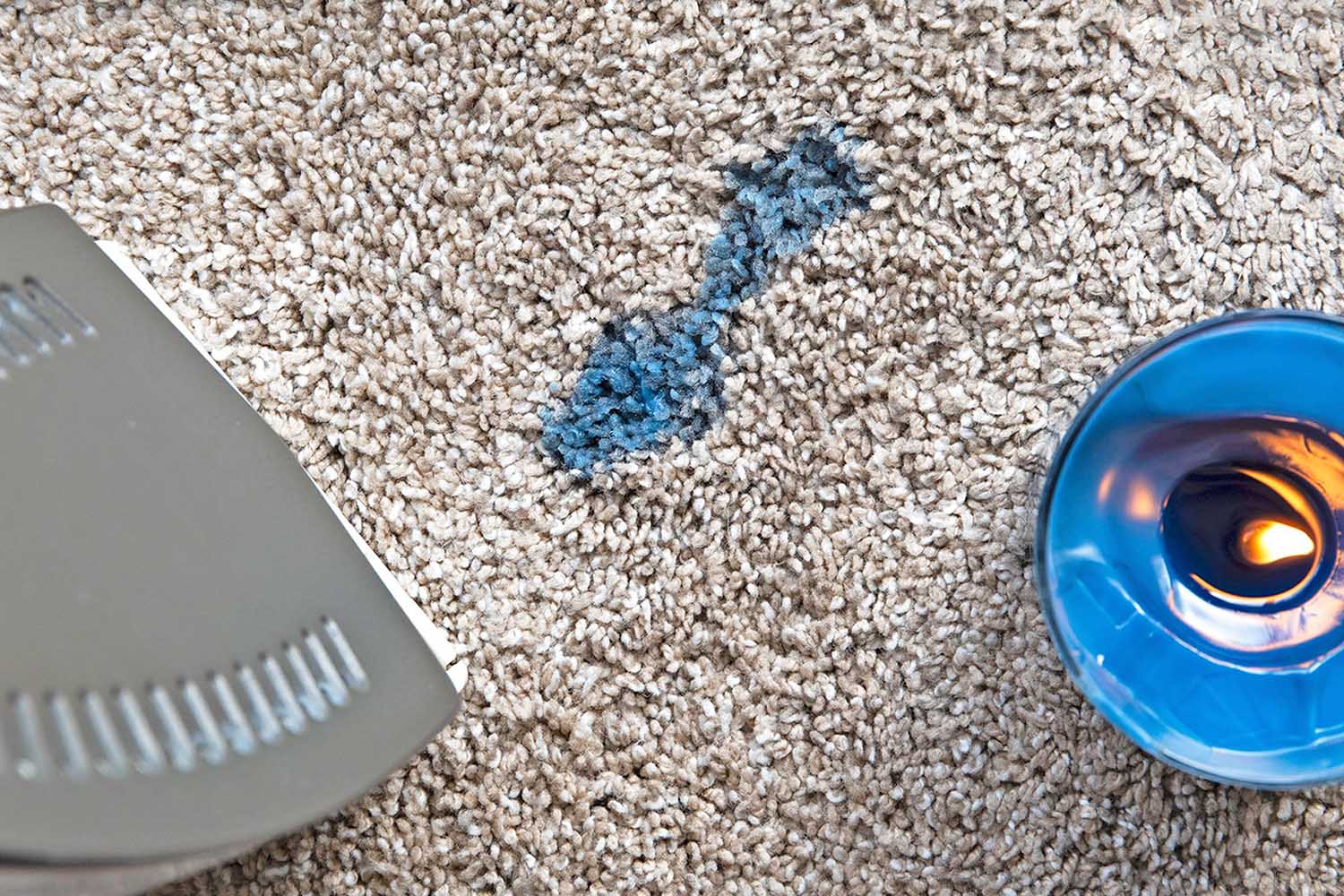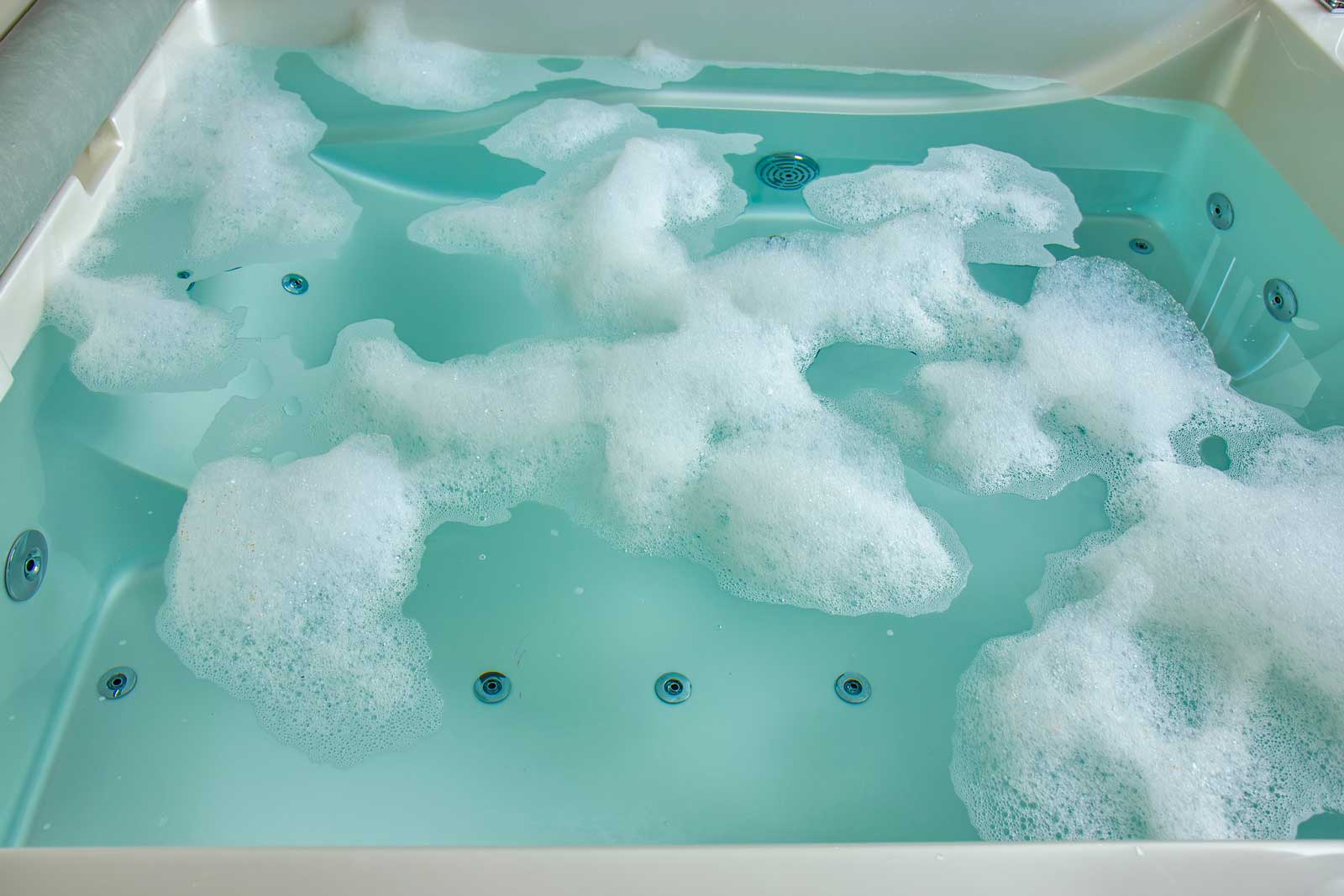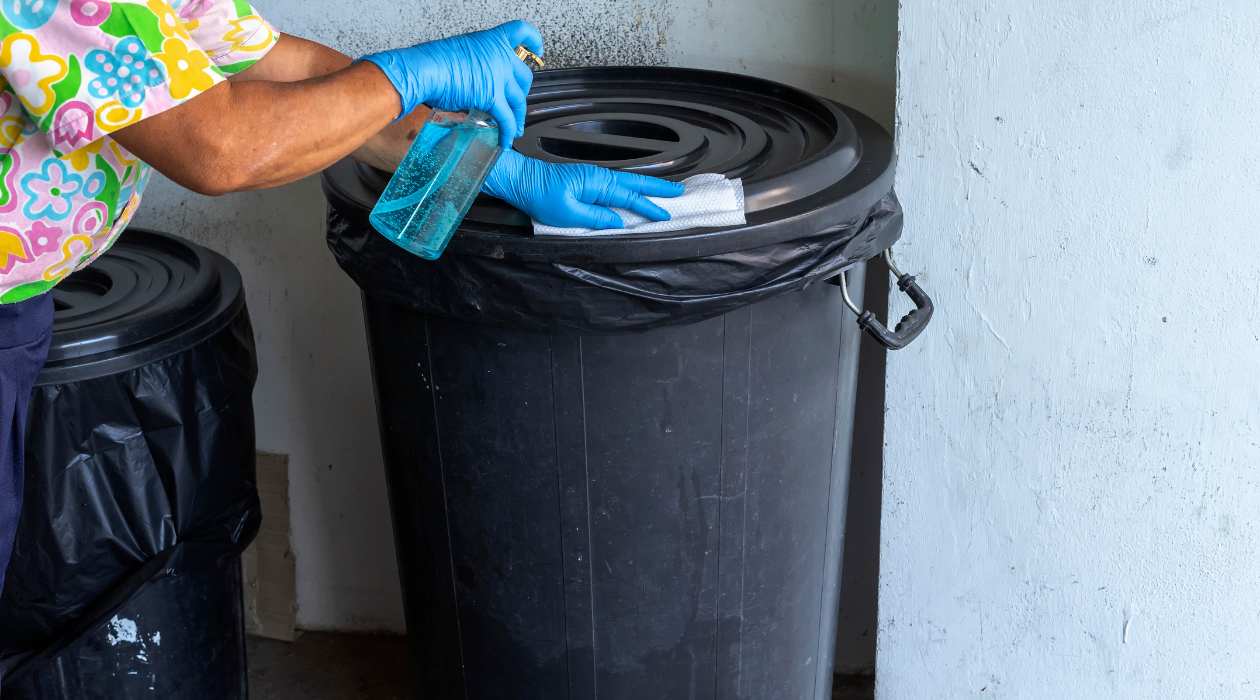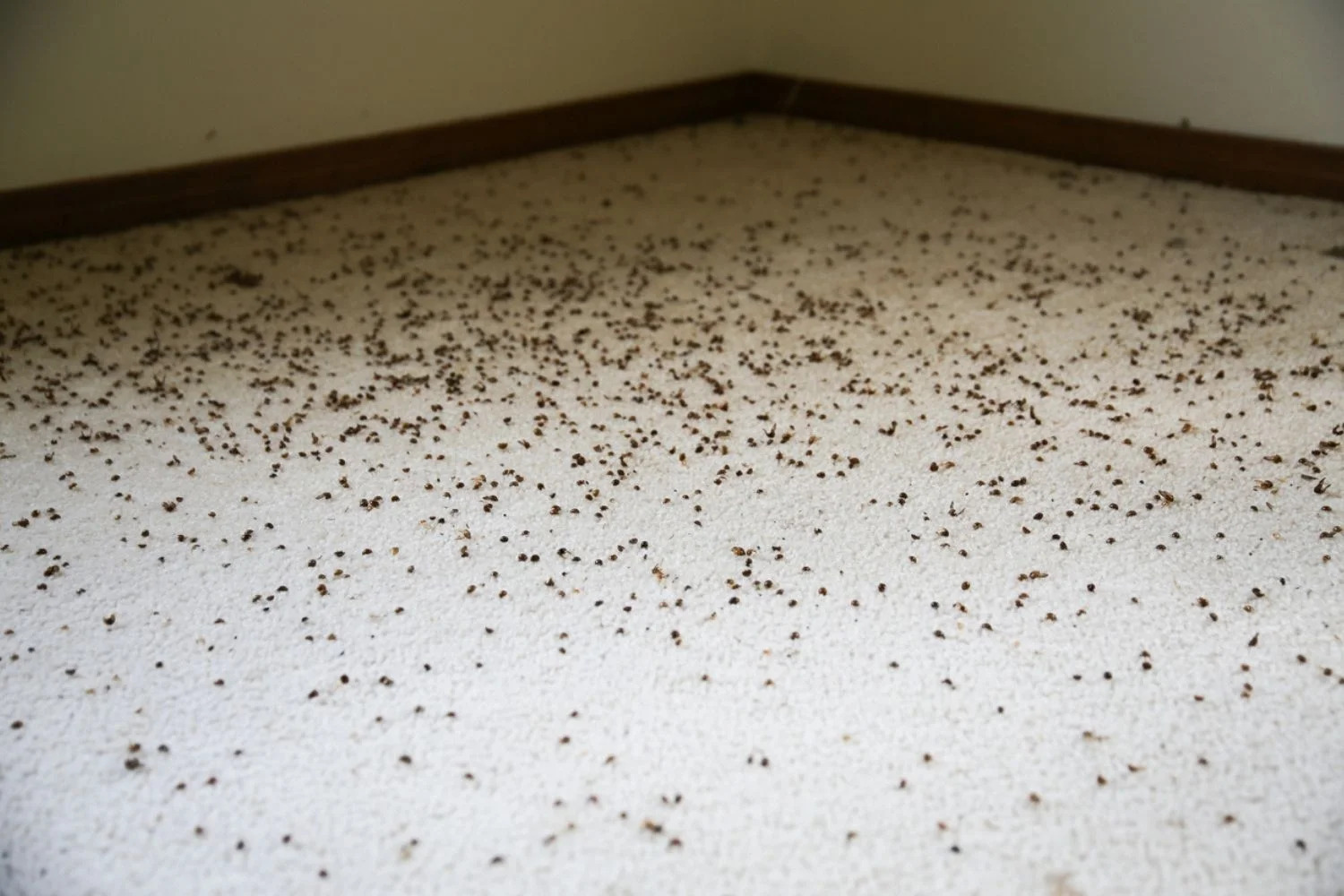

Articles
How Do You Get Rid Of Carpet Beetles
Modified: May 6, 2024
Looking for articles on how to get rid of carpet beetles? Discover effective methods and tips to eliminate these pests and protect your home.
(Many of the links in this article redirect to a specific reviewed product. Your purchase of these products through affiliate links helps to generate commission for Storables.com, at no extra cost. Learn more)
Introduction
Carpet beetles, also known as dermestid beetles, are common household pests that can cause damage to carpets, upholstery, clothing, and other fabric items. These tiny insects feed on natural fibers, such as wool, fur, feathers, and even dead insects. While carpet beetles are not harmful to humans, they can be a nuisance and cause significant damage if left unchecked.
In this article, we will explore the different signs of a carpet beetle infestation and discuss effective methods to get rid of them. By understanding the nature of these pests and implementing the right strategies, you can restore the cleanliness and comfort of your home.
Key Takeaways:
- Identifying and promptly removing infested items, thorough vacuuming, and washing fabrics with high heat are essential steps in effectively eliminating carpet beetles and preventing further damage to your home.
- Implementing preventive measures such as regular cleaning, proper storage of fabric items, and addressing other household pests can significantly reduce the risk of future carpet beetle infestations, ensuring a clean and pest-free environment.
Read more: How Do You Get Carpet Beetles
Understanding Carpet Beetles
Carpet beetles belong to the family Dermestidae and are small, oval-shaped insects that measure around 1/8 to 1/4 inch in length. They have a varied appearance, with some species having colorful patterns on their wings and others having a solid coloration. The larvae of carpet beetles are the stage that causes the most damage to fabrics.
These beetles are attracted to natural fibers, including wool, cotton, silk, fur, and feathers. They are also known to infest stored food products, such as cereals, flour, and pet food. Carpet beetles can find their way into homes through open windows, doors, and even on pets or infested items brought indoors.
Carpet beetle larvae have a voracious appetite and can cause significant damage by feeding on the fibers of carpets, clothing, upholstery, and other fabric items. They are particularly fond of dark, undisturbed areas such as closets, basements, and attics.
It is important to note that carpet beetles can cause allergic reactions in some individuals. The hairs or bristles on the larvae can cause skin irritation, rashes, and respiratory symptoms such as sneezing and coughing.
Now that we have a better understanding of carpet beetles and their behavior, let’s explore the signs that can indicate a carpet beetle infestation in your home.
Signs of Carpet Beetle Infestation
Identifying the signs of a carpet beetle infestation early on is crucial in order to take prompt action and prevent further damage. Here are some common signs to look out for:
- Visible Beetles: While adult carpet beetles are small and often go unnoticed, you may occasionally spot them crawling on surfaces or flying near windows. Their presence indicates an infestation, and it’s important to start investigating further.
- Larvae Casings: The larvae of carpet beetles shed their skin as they grow, leaving behind empty casings. These casings are small, brown, and cylindrical in shape. You may find them near infested fabrics or in corners of closets, along baseboards, or under furniture.
- Damage to Fabrics: Carpet beetle larvae feed on natural fibers and can cause visible damage to carpets, rugs, upholstery, and clothing. Look for irregular holes or chewed areas on these items as a sign of infestation.
- Fecal Pellets: Carpet beetle larvae produce tiny, pellet-like droppings. These droppings can resemble grains of sand or pepper and may be found near infested areas or on surfaces where the larvae have been feeding.
- Adult Beetles Emergence: Carpet beetle larvae typically go through a pupal stage before emerging as adult beetles. If you notice an increase in adult beetle sightings, it could indicate that there is an infestation present.
- Presence of Shed Hair or Feathers: Since carpet beetles are attracted to animal fibers, finding an accumulation of pet hair, fur, or feathers in certain areas can be a sign of an infestation.
- Musty Odor: In some cases, a musty or stale smell may be present in areas infested with carpet beetles. This odor is caused by the beetles’ droppings and shed skins.
If you notice any of these signs in your home, it is important to take immediate action to eliminate the infestation and prevent further damage.
Steps to Get Rid of Carpet Beetles
Now that you have identified the signs of a carpet beetle infestation, it’s time to take steps to eliminate these pests from your home. Here are the recommended steps to get rid of carpet beetles:
-
Identify and Remove Infested Items
The first step is to identify and remove any infested items from your home. This includes carpets, rugs, clothing, upholstery, and any other fabric items that show signs of damage or beetle activity. Seal these items in plastic bags to prevent the spread of beetles and larvae.
-
Read more: Why Do Carpet Beetles Infest Bedrooms
Vacuum Thoroughly
Using a vacuum cleaner with a HEPA filter, thoroughly vacuum all areas of your home, paying special attention to carpets, upholstery, baseboards, and areas where you have seen signs of beetle activity. Dispose of the vacuum bag or empty the canister outside of your home to prevent reinfestation.
-
Wash and Dry Infested Fabrics
Wash all infested fabrics, such as clothing and bedding, in hot water (at least 120°F) and dry them on high heat. The heat will kill any remaining larvae or beetles. If the items cannot be washed, consider dry cleaning them or sealing them in plastic bags and placing them in the freezer for a few days.
-
Freezing Infested Items
If you have smaller infested items that cannot be washed or dry cleaned, such as stuffed animals or pillows, you can kill the beetles and larvae by placing them in a sealed plastic bag and placing them in the freezer for a minimum of 72 hours.
-
Steam Cleaning
Using a steam cleaner, treat your carpets, upholstery, and other fabric surfaces. The high temperatures generated by the steam will kill any remaining beetles and larvae. Be sure to follow the manufacturer’s instructions and take precautions to avoid damaging delicate fabrics.
-
Read more: What Causes Carpet Beetles
Use Pesticides or Natural Remedies
If the infestation persists or if you want additional protection, consider using pesticides or natural remedies specifically designed to target carpet beetles. Follow the instructions provided by the product carefully and take necessary safety precautions when applying any pesticide. Alternatively, you can opt for natural remedies like diatomaceous earth or essential oils, which work as drying agents or repellents against carpet beetles.
-
Maintain Proper Hygiene and Cleaning Practices
Prevent future infestations by maintaining proper hygiene and cleaning practices in your home. Regularly vacuum and clean your carpets, rugs, and upholstered furniture. Keep your home clutter-free and store clothing and fabric items in sealed containers or bags. Also, be cautious when bringing in second-hand items, as they may be carrying carpet beetles.
By following these steps and being diligent in your efforts, you can successfully get rid of carpet beetles and minimize the risk of future infestations. Remember that persistence and thoroughness are key in ensuring a beetle-free home.
Identify and Remove Infested Items
The first step in getting rid of carpet beetles is to identify and remove any infested items from your home. This is crucial to prevent the spread of beetles and larvae to other areas of your house.
Start by inspecting your carpets, rugs, clothing, upholstery, and any other fabric items for signs of damage or beetle activity. Look for irregular holes, chewed areas, or larvae casings. Pay special attention to dark, undisturbed areas such as closets, basements, attics, and under furniture, as these are common hiding spots for carpet beetles.
Once you identify infested items, it’s essential to remove them from your home. Place the infested items in plastic bags and seal them tightly to prevent the beetles from escaping or spreading to other areas. If possible, take the bags directly outside of your home to minimize the risk of reinfestation.
Depending on the extent of the infestation, you may need to discard heavily damaged items that cannot be salvaged. However, if the infestation is limited, you can take steps to treat and save valuable items.
If you have clothing or fabric items that are infested, you can wash them in hot water (at least 120°F) to kill any beetles or larvae. After washing, dry them on high heat to ensure complete elimination. Dry cleaning can also be an effective method for treating infested fabrics.
For larger items such as carpets, rugs, or upholstered furniture, you may need professional assistance to ensure thorough treatment and removal of beetles and larvae.
Remember that removing infested items from your home is a critical step in eliminating carpet beetles. By taking swift action and removing these items, you can prevent further damage and minimize the risk of infestation spreading to other areas.
Vacuum Thoroughly
Vacuuming is a crucial step in getting rid of carpet beetles as it helps to remove adult beetles, larvae, shed skin, and other debris from your carpets, rugs, upholstery, and other fabric surfaces.
Before you begin vacuuming, ensure that you have a vacuum cleaner with a HEPA (High-efficiency Particulate Air) filter. HEPA filters are designed to capture small particles and allergens, making them highly effective in trapping carpet beetles and their allergenic hairs.
Start by vacuuming all areas of your home where you have noticed signs of beetle activity or where infested items were located. Pay close attention to carpeted areas, rugs, and upholstery, as carpet beetles tend to hide in these fibers.
Move furniture and other objects to access hidden areas, such as corners, baseboards, and under furniture. Use the vacuum’s crevice tool to clean along baseboards and tight spaces where beetles may be hiding.
When vacuuming, make sure to go over each area multiple times to ensure thorough cleaning. Be methodical and cover the entire surface, going in both parallel and perpendicular directions to ensure you collect any beetles and larvae that may be lodged deep in the fibers.
Once you have finished vacuuming, immediately dispose of the vacuum bag or empty the canister outside of your home. This prevents the beetles and larvae from escaping and potentially reinfesting your living space.
Regular vacuuming is essential in preventing carpet beetle infestations. Make it a habit to vacuum your carpets, rugs, and upholstered furniture on a weekly basis, even if you don’t notice any signs of infestation. This helps to remove any potential food sources and prevents beetles from establishing a presence in your home.
Remember, thorough vacuuming is a key step in the process of getting rid of carpet beetles. By removing beetles, larvae, and debris from your home, you can significantly reduce the population and minimize the risk of future infestations.
Read more: How To Get Rid Of Fleas In A Carpet
Wash and Dry Infested Fabrics
One effective method to eliminate carpet beetles from infested fabrics is to wash and dry them using high heat. This process helps to kill any remaining beetles, larvae, and eggs, ensuring that your fabrics are thoroughly cleaned and free from infestation.
Start by gathering all infested fabrics, including clothing, bedding, curtains, and other washable items. Sort them according to their care labels, separating items that can be washed in hot water from those that need to be dry cleaned.
For fabrics that can be washed in hot water, set your washing machine to a temperature of at least 120°F (49°C) or higher. Use a regular cycle and add a detergent suitable for the fabric type. The hot water and detergent combination will effectively kill the carpet beetles and remove any accumulated debris.
After the washing cycle is complete, transfer the washed fabrics to the dryer. Set the dryer to high heat and run it for a complete drying cycle. The heat will further eliminate any remaining carpet beetles, larvae, or eggs that may have survived the washing process.
It’s important to note that some delicate fabrics may not tolerate high heat or vigorous washing. In such cases, consider dry cleaning them to ensure thorough cleaning and elimination of carpet beetles.
For items that cannot be washed or dry cleaned, such as stuffed animals or pillows, there are alternative methods to treat them. Place the items in sealed plastic bags and put them in the freezer for a minimum of 72 hours. The extreme cold temperature will kill any beetles, larvae, or eggs present, effectively eliminating the infestation.
Remember to inspect and clean the areas where the infested fabrics were stored or used to prevent the spread of beetles. Vacuum any crumbs or debris, and wipe down surfaces with a mild detergent to remove any potential attractants for carpet beetles.
By washing and drying your infested fabrics with high heat, you can ensure that the beetles, larvae, and eggs are eliminated, contributing to the overall eradication of the carpet beetle infestation in your home.
Freezing Infested Items
Freezing infested items is a simple yet effective method to eliminate carpet beetles and their larvae. Extreme cold temperatures can kill these pests and prevent them from spreading to other areas of your home.
Start by placing the infested items, such as clothing, stuffed animals, or pillows, in sealed plastic bags. Make sure the bags are tightly sealed to prevent moisture and air from entering.
Next, transfer the sealed bags to the freezer and leave them inside for a minimum of 72 hours. The low temperatures will kill any carpet beetles, larvae, or eggs present in the items.
It’s important to note that not all items can withstand freezing temperatures. Delicate fabrics, electronics, or certain materials may be damaged by freezing. In such cases, consider using alternative methods to treat and eliminate the infestation, such as washing or steam cleaning.
Once the freezing period is complete, remove the items from the freezer and allow them to gradually return to room temperature. Inspect the items to ensure that all signs of infestation, such as beetles, larvae, or larvae casings, are no longer present.
After confirming that the infestation has been eradicated, wash or dry clean the items as necessary to remove any remaining debris or allergenic hairs.
It’s worth noting that freezing may not be suitable for larger items like carpets or furniture. In such cases, it’s best to seek professional assistance to ensure proper treatment and removal of carpet beetles.
Remember, freezing infested items is a safe and effective method to kill carpet beetles and their larvae. By using this technique, you can eliminate the infestation and prevent further damage to your belongings.
Steam Cleaning
Steam cleaning is a powerful method to eliminate carpet beetles and their larvae from various surfaces. It utilizes high-temperature steam to kill the pests and remove any debris or allergenic hairs, providing a thorough and effective cleaning solution.
To start, ensure that you have a steam cleaner specifically designed for household use. Read and follow the manufacturer’s instructions to operate the steam cleaner safely and effectively.
Before you begin, remove any loose debris or dirt from the surfaces you plan to steam clean. This can be done by vacuuming or sweeping the area to ensure the steam cleaner can work efficiently.
Next, fill the steam cleaner with water according to the manufacturer’s guidelines. Allow the machine to heat up and produce steam. It’s important to use a steam cleaner that generates high-temperature steam, as this is crucial for effectively eliminating carpet beetles.
Once the steam cleaner is ready, start by treating carpets, rugs, and upholstery in infested areas. Move the steam cleaner slowly over the surfaces, focusing on areas where signs of infestation are present. The high heat of the steam will kill carpet beetles, larvae, and eggs, while the pressure will help dislodge debris and dirt.
Pay special attention to areas around baseboards, in corners, and under furniture, as these are common hiding spots for carpet beetles. Use the appropriate attachments or nozzles to access hard-to-reach areas and crevices.
For clothing, curtains, or other removable fabric items, you can use a handheld steam cleaner or hang them in a contained area and direct the steam towards the infested areas. Ensure that the steam does not come into direct contact with delicate fabrics to avoid potential damage.
After steam cleaning, allow the surfaces to dry thoroughly. Adequate drying is important to prevent moisture buildup, which could potentially lead to mold or mildew.
Regular steam cleaning can also serve as a preventive measure against carpet beetles. By incorporating it into your cleaning routine, you can effectively eliminate any potential beetle infestations and maintain a pest-free environment.
Remember, steam cleaning is a highly effective method to eradicate carpet beetles and their larvae. By utilizing the power of high-temperature steam, you can eliminate these pests and restore the cleanliness of your home.
Use Pesticides or Natural Remedies
If the carpet beetle infestation persists or if you want additional protection against these pests, you can consider using pesticides or natural remedies specifically formulated to target carpet beetles. It’s important to carefully follow the instructions provided by the product and take necessary safety precautions when applying any form of pesticide.
Before using any pesticide, it is recommended to conduct a thorough cleaning of the affected areas by vacuuming and removing infested items. This preparation helps to reduce the population of carpet beetles and allows the pesticide to penetrate more effectively.
Pesticides designed for carpet beetles may come in different forms, such as sprays, dusts, or aerosols. Follow the instructions on the product label regarding application methods and targeted areas. Common treatment areas include carpets, rugs, baseboards, furniture, and other areas frequented by carpet beetles.
When applying the pesticide, ensure that you cover all infested surfaces, paying particular attention to cracks, crevices, and hidden areas where carpet beetles may hide. It may be necessary to repeat the application after a certain period of time to eliminate newly hatched larvae.
Alternatively, you can opt for natural remedies as a chemical-free approach to control carpet beetles. Diatomaceous earth, for example, is a natural powder made from fossilized algae. It acts as a desiccant, dehydrating and killing carpet beetles and larvae. Sprinkle diatomaceous earth in infested areas and leave it for a few days before vacuuming it up.
Essential oils like lavender, cedar, or eucalyptus can also be effective for repelling carpet beetles. Mix a few drops of essential oil with water and spray the solution in infested areas or directly on infested fabrics. However, exercise caution when using essential oils if you have pets or individuals with sensitivities in your home.
It’s important to note that while pesticides and natural remedies can be effective in controlling carpet beetles, it’s advisable to conduct a patch test or consult with a professional before applying any chemicals or essential oils on delicate fabrics.
Always follow the manufacturer’s instructions and exercise caution when using pesticides or natural remedies. Safety should be a top priority when dealing with any pest control products.
By using pesticides or natural remedies, you can effectively target and eliminate carpet beetles, providing an extra layer of protection and ensuring a beetle-free environment for your home.
Regular vacuuming and steam cleaning can help eliminate carpet beetles and their larvae. Be sure to also clean and dust all areas of your home, including furniture, curtains, and baseboards, to remove any potential food sources for the beetles.
Read more: How To Get Rid Of Slime On A Carpet
Maintain Proper Hygiene and Cleaning Practices
Maintaining proper hygiene and cleaning practices is crucial in preventing future infestations of carpet beetles. By adopting good habits and implementing regular cleaning routines, you can create an environment that is less attractive to these pests.
Here are some practices to incorporate into your cleaning routine:
- Vacuum frequently: Regularly vacuum your carpets, rugs, and upholstered furniture to remove any potential food sources for carpet beetles. Pay extra attention to areas where debris tends to accumulate, such as corners, baseboards, and beneath furniture.
- Keep your home clutter-free: Reduce hiding places for carpet beetles by decluttering your living space. Remove piles of papers, magazines, or unused clothing that can become cozy spots for these pests.
- Store clothing and fabric items properly: Seal and store off-season clothing, blankets, and other fabric items in airtight containers or vacuum-sealed bags. This prevents carpet beetles from accessing and infesting these items.
- Regularly wash or dry clean textiles: Regularly wash or dry clean clothing, bedding, and curtains to remove any potential carpet beetle eggs or larvae. Following proper laundering practices for different fabrics ensures thorough cleaning and prevents infestations from taking hold.
- Inspect second-hand items: When bringing in second-hand clothing, furniture, or any other fabric items, thoroughly inspect them for signs of carpet beetles before introducing them into your home. Wash or clean the items before use to eliminate any potential infestations.
- Maintain proper ventilation: Adequate air circulation and ventilation in your home can help prevent carpet beetles from thriving. Open windows and use fans to keep the air flowing and create an environment that is less attractive to these pests.
- Address other household pests: Carpet beetles can be attracted to areas infested with other insects, such as beetles or moths. Properly address and eliminate these pests to reduce the risk of carpet beetle infestations.
By incorporating these hygiene and cleaning practices into your daily routine, you can create an environment that is less conducive to carpet beetle infestations. Regular maintenance and diligence are essential in preventing these pests from causing further damage to your fabrics and belongings.
Preventing Future Infestations
Preventing future infestations of carpet beetles is key to maintaining a pest-free home. By implementing preventive measures, you can minimize the risk of these pests returning and causing damage to your fabrics and belongings. Here are some effective strategies to prevent carpet beetle infestations:
- Regular cleaning: Maintain a regular cleaning schedule to remove potential food sources for carpet beetles. Vacuum carpets, rugs, and upholstered furniture on a weekly basis, and pay attention to cracks, corners, and hidden areas where debris may accumulate.
- Store fabrics properly: Keep clothing, blankets, and other fabric items stored in airtight containers or vacuum-sealed bags when not in use. This prevents carpet beetles from accessing and infesting these items.
- Seal entry points: Inspect and seal any cracks or gaps in windows, doors, and walls to prevent carpet beetles from entering your home. Pay special attention to areas where utility lines or cables enter the house.
- Monitor second-hand items: When acquiring second-hand clothing, furniture, or other fabric items, thoroughly examine them for signs of carpet beetles before bringing them into your home. Washing or cleaning the items before use can further eliminate any potential infestations.
- Maintain proper ventilation: Ensure adequate air circulation and ventilation in your home, as carpet beetles prefer dark and stagnant environments. Open windows, use fans, and consider using dehumidifiers in damp areas to create an environment that is less attractive to carpet beetles.
- Reduce outdoor breeding sites: Regularly mow the lawn, trim shrubs, and eliminate weeds to minimize outdoor breeding sites for carpet beetles. Keeping outdoor areas tidy reduces the likelihood of these pests finding their way into your home.
- Address other pests promptly: Carpet beetles can be attracted to areas infested with other insects, such as beetles or moths. Take immediate action to address any other pest issues in your home to discourage carpet beetles from becoming a problem.
- Regular inspections: Conduct regular inspections of your home, paying close attention to areas where carpet beetles are most likely to infest, such as closets, basements, attics, and upholstered furniture. Early detection can help prevent infestations from spreading.
By implementing these preventive measures, you can significantly reduce the risk of future carpet beetle infestations. Consistency and diligence in maintaining a clean and well-maintained environment are key to keeping these pests at bay.
Conclusion
Carpet beetles can be a pesky nuisance, causing damage to fabrics and posing a potential allergenic risk. However, with the right knowledge and strategies, you can effectively get rid of these pests and prevent future infestations.
In this article, we have explored the various steps to eliminate carpet beetles from your home. We discussed the importance of identifying and removing infested items, vacuuming thoroughly, washing and drying infested fabrics, freezing infested items, steam cleaning, using pesticides or natural remedies, and maintaining proper hygiene and cleaning practices. Each step plays a crucial role in eradicating carpet beetles and ensuring a beetle-free environment.
It is important to stay vigilant and address carpet beetle infestations as soon as possible. Early detection and prompt action can prevent further damage and minimize the risk of these pests spreading to other areas of your home.
Furthermore, taking preventive measures is essential in keeping your home free from future infestations. Regular cleaning, proper storage of fabric items, sealing entry points, and addressing other household pests are effective ways to deter carpet beetles from making a comeback.
Remember, when dealing with carpet beetles, it is crucial to follow safety precautions, especially when using pesticides. Always read and follow the instructions provided by the product manufacturer to ensure safe and effective application.
By implementing the methods and strategies discussed in this article, you can successfully eliminate carpet beetles from your home and create a clean, pest-free environment for you and your family to enjoy.
Now that you've tackled carpet beetles, why stop there? Keep your home safe and clean by learning how to get rid of pantry moths, too. Our pest control experts explain tried-and-true methods in our next piece, ensuring these unwelcome guests won't spoil your pantry goods. Don't let pests take over; arm yourself with knowledge and take control today!
Frequently Asked Questions about How Do You Get Rid Of Carpet Beetles
Was this page helpful?
At Storables.com, we guarantee accurate and reliable information. Our content, validated by Expert Board Contributors, is crafted following stringent Editorial Policies. We're committed to providing you with well-researched, expert-backed insights for all your informational needs.

